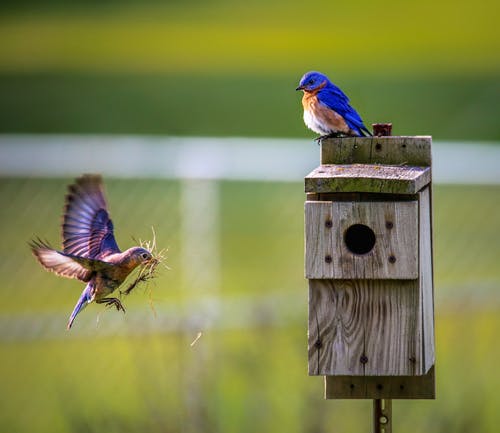By Dr. Karen Becker, DVM
Today’s Discussion Subject: Pet Foods
A subject readers here at HealthyPets and clients at my animal clinic are very interested in is the kind of food they should be feeding their dog or cat for good health. So by popular demand, today is a discussion of pet foods. Here are my recommendations for the best-to-worst diets you can feed your pet.
There are 13 categories on my list, and what you’re feeding will fall into one of them.
via GIPHY
Now, if the diet you’re serving your dog or cat happens to fall into one of the lower quality categories, I don’t want you to beat yourself up about it.
As a general rule, people who are feeding their pets a lesser quality diet are doing so either because they can’t afford a better food – or they simply don’t know what constitutes good nutrition for their pet.
If you discover your furry buddy is eating from the lower half of the list, set a goal to feed a better quality food now that you know the difference, or when you can afford a more nutritious brand.
Again, everyone’s pet food of choice can be found in one of these categories. I encourage you to figure out where the diet you’re serving right now falls in the list. Then you can strive for improvement by feeding more nourishing, species-appropriate food.
Food Can Either Heal or Harm

As a proactive veterinarian interested in sustaining the natural good health of my pet patients, I always encourage pet owners to evaluate their animal’s diet, because food is the foundation upon which good or ill health is built.
It’s important to understand that food has the ability to heal or harm your pet, depending on the type and quality of nutrition you provide.
The first factor you should evaluate is the species-appropriateness of what your dog or cat is eating.
A species-appropriate diet contains lots of good quality protein as well as moisture. The protein is necessary because both dogs and cats are carnivores.
High moisture content is required in order to prevent organ dysfunction, including kidney failure. Dogs and cats are designed to eat food that is about 70 percent moisture, which is what a diet of mice and rabbits would provide if your pet hunted his own food.
If you feed your pet dry food only, he’s getting only about 12 percent moisture instead of the 70 percent his body demands. This is especially unhealthy for cats, because they don’t supplement their moisture intake by drinking large amounts of water like dogs do.
Pets on dry food diets (kibble or pelleted) live in a state of chronic, mild dehydration that over time can cause significant stress to their organs.
Species-appropriate nutrition does not contain much starch, also known as grains or carbohydrates. Corn, wheat, rice and soy are found in most commercial processed pet foods, but your dog or cat has no biological need for them.
I recommend you follow the laws of nature when it comes to your pet’s diet, which is to feed everything his body needs and eliminate ingredients that provide no nourishment.
In addition to the species-appropriateness of your pet’s diet, it also needs to be balanced. By balanced I mean food that contains all the vitamins, minerals and other nutrients your dog or cat needs.
This isn’t something you can guess at – it should be guaranteed through testing.
Nutritional balance is vitally important because deficiencies will develop much faster in your dog or cat than they will in you. A poorly nourished puppy or kitten can end up with obvious signs of skeletal problems and organ degeneration before she’s six months old.
An older animal can develop life-threatening organ degeneration, among many other not-so-obvious symptoms, over a one to three year period of eating an unbalanced, nutrient-deficient diet.
The List of Best-to-Worst Foods
A Balanced, Raw, Homemade Diet

It is the best food you can feed your dog or cat. It will be nutritionally balanced because you’re following recipes like those found in the cookbook I co-authored, Real Food for Healthy Dogs and Cats.
Raw means the food is unadulterated and still contains all the enzymes and nutrients that are typically destroyed during cooking or other types of processing.
Homemade is the best option because you are in complete control of the quality of ingredients in your pet’s diet.
I recommend pets get plenty of nutritional variety, and another great thing about serving homemade is you can buy seasonal fruits and veggies on sale, as well as protein sources (meats), and use them in rotation.
Commercially Available Raw Diet
It’s the next best thing you can feed your pet. This is a raw food diet that someone else has done the heavy lifting to prepare.
It’s important that the diet is balanced. You should be aware that there are raw food pet diets entering the market that are not yet proven to be nutritionally complete. These foods often say “For supplementation or intermittent feeding” on the label.
You’ll know if the raw food you’ve selected is balanced because it will say it right on the packaging: “This food has been proven to be nutritionally complete or adequate for all life stages.”
At the present time, these diets are found only in the freezer section of small/privately owned or upscale pet boutiques. They are not yet in the big box pet stores. You can also find a selection online.
Cooked, balanced homemade diet.
It’s the same diet found in number 1, above, except that it’s cooked. This means some of the nutrient composition has been diminished through processing.
Human-grade canned food.
If the label doesn’t say the ingredients are human grade, they’re not. Pet food made with human-grade ingredients is also a great deal more expensive. That’s another way to tell what you’re getting.
This type of diet is the most expensive you can feed your pet. What I tell my clients is, “If you have more money than time, you can purchase human-grade canned food for your dog or cat. But if you have more time than money, I recommend you make a balanced, homemade diet right in your own kitchen for a fraction of the cost.”
-
- Human-grade dry food. As I discussed earlier, dry food is not as species-appropriate as a moisture-dense diet. Human grade is very important because the food is approved, in theory, for human consumption. This means it doesn’t contain low quality rendered by-products.
- Super premium canned food which can be found at big box pet supply stores like Petco and PetSmart.
- Super premium dry food.
- Veterinary-recommended canned food. Vet recommended canned foods are purchased at your vet’s office or clinic. Typical brands are Science Diet, the Purina veterinary lines, Royal Canin and Waltham.
- Veterinary-recommended dry food.
- Grocery store brand canned food.
- Grocery store brand dry food.
- Semi-moist pouched food.
- Top 20 best Puppy Foods
The reason this type of pet food is so far down the list is because in order for the food to remain “semi-moist,” an ingredient called propylene glycol is added. This is a scary preservative that is a second cousin to ethylene glycol, which is antifreeze. And while propylene glycol is approved for use in pet foods, it is unhealthy for dogs and cats. I do not recommend feeding any food that contains this additive.
Dead Last on the List: Unbalanced, Homemade Diet – Raw or Cooked
The worst thing you can feed your pet is an unbalanced, homemade diet – raw or cooked. I’m seeing an increasing number of misguided pet owners in my practice who think they’re doing the right thing by serving their pet, say, a chicken breast and some veggies and calling it a day.
Yes, the food is homemade, but it’s nutritionally unbalanced. Pets being fed this way are showing up at my clinic with endocrine abnormalities, skeletal issues and organ degeneration. This is caused by deficiencies in calcium, trace minerals and omega fatty acids due to diet.

From Worst to Best in a Heartbeat
For those of you who now know you’re feeding your pet an unbalanced, homemade diet, there’s an extremely quick and easy way to soar to the top of the list.
All you need to do is add ingredients to balance out the nutrition in the diet you’re already serving. This is a fast, simple fix you can apply to turn an unbalanced homemade diet into a balanced one.
So there you have it – the entire list of my recommendations for best-to-worst pet diets.
If your pet’s food is on the lower half of the list, set a goal to work toward the top.
If you’re already at the top end of the list, congratulations! You’re doing the best thing possible by providing species-appropriate nutrition for the animals in your care
If you would like to learn more about making homemade meals for your pets, my recipe book is available here
Dr. Becker is the resident proactive and integrative wellness veterinarian of HealthyPets.Mercola.com. You can learn holistic ways of preventing illness in your pets by subscribing to MercolaHealthyPets.com, an online resource for animal lovers. For more pet care tips, subscribe for FREE to Mercola Healthy Pet Newsletter.
.
Enjoyed this article? Here are three more to help you:
Cooking for Your Dog with Gayle Pruitt on The Real Dr. Doolittle Show™
First-Time Dog Owner Guide: Health and Nutrition
All about Pet Food
Photo by Daria Shevtsova from Pexels
The post Pet Foods – Ranked From Great to Disastrous… appeared first on Val Heart.
source
https://valheart.com/pet-foods-ranked-from-great-to-disastrous/

















 Today I am talking to Olga Horvat, MA. Olga is the founder of Royal Dogs Gallery, a company that provides spiritual and holistic products and services exclusively for dogs and their owners.
Today I am talking to Olga Horvat, MA. Olga is the founder of Royal Dogs Gallery, a company that provides spiritual and holistic products and services exclusively for dogs and their owners.

